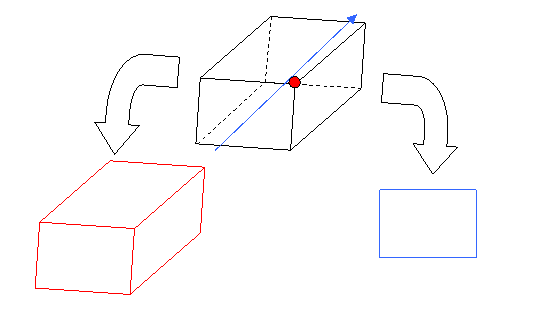
Next: Projections
Up: Home
Previous: Home
There are two types of projections we often use: perspective projections and parallel (orthogonal) projections. Here we deal with the latter. When doing a projection, we will lose some information. Our goal is to obtain 2D representations that approximate the real objects as faithfully as possible in some sense. Intuitively, we may think of our objects as a wire-frame sitting in 3D space above the horizontal xy-plane, and the parallel projection of the object on the xy-plane as the shadow cast by the wire-frame when a light source shines from a point infinitely high along the positive z-axis. Obtaining "nice" parallel projections of an object then reduces to the problem of finding a suitable 3D rotation for the object such that its shadow on the xy-plane contains the desired properties. Here is an example of two different projections of a simple cuboid.

Contact us :
Jean HERBIERE and Yueyun SHU